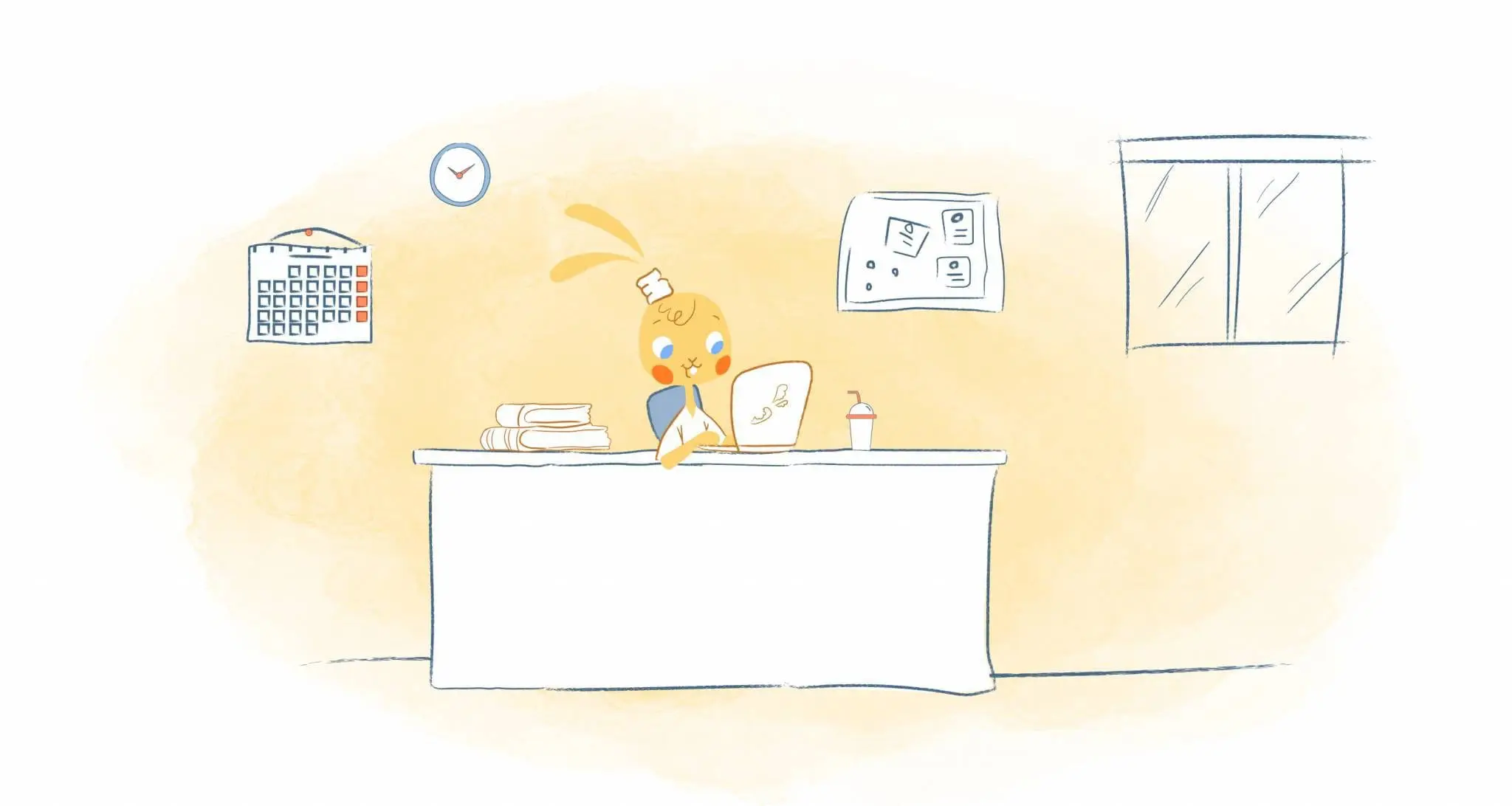

Are you looking for a simple and effective way to spur your productivity? Well, why not spruce up your workspace? After all, your workspace has a direct impact on your productivity.
Think about it. Your office is in a dark, dingy basement. You’re surrounded by piles of paperwork and empty coffee cups. There’s a TV blasting on in the background. And, your family or co-workers are running around above you. No wonder that 46% of professionals indicated that their existing workspace influenced their productivity.
That doesn’t sound like a workspace that is conducive to productivity. So, if you’re in a somewhat similar situation, then it’s time to redesign your work environment.
Now, before going any further, there are some considerations, such as your budget and working personalities. I mean, it would be great to build a home office furnished with an expensive standing desk. But, that might not be possible if you live in a one-bedroom apartment living on a tight budget.
The good news is that most of the tips listed below don’t require a hefty investment or separate working area. So, with that in mind, here are some of the best ways to improve your workspace to enhance productivity.
It’s not how you look; it’s how you feel.
If you’re entirely going to overhaul your workspace, you’re probably going to start with your furniture. While you may be tempted to purchase the latest offerings from a place like IKEA, there are a couple of problems here.
Trendy furniture may be swanky and contemporary. But the furniture may not be made from quality materials or meet your specific needs. What’s more, you may have to replace your newly acquired desk, chair, or shelving in a couple of years when a new trend emerges.
I’m not trying to hate on IKEA. The store indeed serves a purpose. My argument is that you should focus more on ergonomics instead. Mainly this is because it’s more comfortable and reduces stress on the spine, neck, and hips. It can also prevent cervical spondylosis (neck arthritis).
Also, regardless if you do purchase ergonomic furniture or stick with what you currently have, make sure that you:
- Place the top of the monitor below at eye-level. And, your eyes should be 24-36 inches from the screen.
- Always keep your feet resting on the floor. Or, you could purchase a footrest.
- Posture your chair slightly reclined to reduce pressure on your spine. In turn, this will minimize lower back pain.
- Keep your wrists straight and hands at or below level.
I’d also recommend purchasing a standing desk. Besides combating a sedentary lifestyle, standing desks can also boost productivity. As for setting up your office, position it away from visual distractions, keep the surface clean, and set-up a workflow. For instance, move in the same direction by changing your finished work from the right side of your desk to the left.
Organize and eliminate clutter.
Why go through the trouble of purchasing new furniture or adjusting your current pieces if you aren’t going to keep your environment clean or organized? Studies found that clutter can lead to procrastination, decreases productivity, increases stress, and makes it more difficult to unwind.
Moreover, it can encourage bad habits like unhealthy eating. And, clutter can also clog your neural networks. That means it will take you longer to process information.
If you make this a regular occurrence, like straining up your workspace before the end of the workday, then this won’t become a chore that you dread. I’d also suggest that you spend every Friday afternoon doing more of the heavy cleaning.
Now, don’t overwhelm yourself here. Start small, like a draw on your desk. Then, move on to another area after that. The key is to trash, recycle, donate anything that you don’t need, give everything a home, and keep up it clean.
Make your workspace reflect who you are.
“Your workspace reflects who you are, so make it welcoming, calming, and focused,” writes entrepreneur Jason McCann. “The formula is fluid, but incorporating a few personal touches—a picture or two, a small potted plant, a Rubik’s cube—with a lot of open desk space will do wonders for your mental focus.”
McCann is one to something here. Researchers have found that personalizing your workspace gives you a greater sense of control. That may not seem like a big deal. But, that can keep you focused, motivated, and inspired.
Furthermore, this can “contribute to individuals’ positive cognitive and affective states,” the researchers write. As a result, this enhances mental resources, which enable “better coping with the potentially debilitating interferences associated with low privacy.”
Introduce live plants.
Countless studies have found that plants not only increase the air quality of indoor space; they also provide psychological benefits. Plants can improve employee satisfaction and increase productivity by up to 15 percent.
What plants should you place around your workspace? Well, that depends. You need to take into consideration how much light the plant needs and what you want it to bring. “They can fill a space, they can frame a space, or they can follow a space,” says Freddie Blackett, co-founder, and CEO of online gardening startup Patch. Knowing this can help you determine the size, shape, and density of the foliage you should purchase.
Some of the most popular options, which are also easy to care for, include:
- Aloe
- Bamboo
- Boston fern
- Corn plants
- English ivy
- Parlor palm
- Peace lily
- Rubber tree
- Snake plant
Choose the right colors.
Numerous studies have found that different colors can influence creativity, emotions, focus, stress, and productivity. But why?
“Color travels to us on wavelengths of photons from the sun,” explains color psychologist Angela Wright. “And when they strike a colored object, that object absorbs only the wavelengths that match its own atomic structure, and they reflect the rest, and that’s what we see.”
“So the different wavelengths strike the eye in different ways,” Wright adds. “In the retina, they are converted into electrical impulses that pass to the part of the brain known as the hypothalamus, which governs our endocrine system and hormones, and much of our activity.”
“Research has shown that blue colors affect your mind,” adds Chris Baily. “Yellow your emotions; red your body; and green your ‘balance.’ By combining these colors, you can influence your behavior.
That’s a very simplistic explanation. But, the jest is you should pick the right color depending on the type of work you do. For example, blue can stimulate your mind, while red is perfect if you’re doing something physical.
Invoke your senses.
It may not be on the top of your mind, but your senses can play a massive part in your productivity. Take the temperature as an example. How can you focus when you’re shivering or sweating? Moreover, changes in temperature can also affect your mood. While the ideal temp is different for everyone, the 68-76 degrees Fahrenheit range is recommended.
In addition to the temperature, also prioritize natural lighting.
“The benefits of natural lighting are pretty undeniable,” writes Renzo Costarella. Preferably, “you should prioritize natural lighting for your workspace. If your office space has a southern exposure, try to set up your workspace in that area. If you don’t have access to any sunny areas, then you should purchase a full-spectrum light.”
“Poor lighting can adversely affect your productivity and can lead to headaches and eye strain,” adds Renzo. “General rule of thumb is to make sure you have ample lighting in your workspace.”
Next, take into consideration background noise. For some, it drives people wild. If you fall into this camp, then relocate to a quiet and secluded place. If that’s not an option, definitely invest in a pair of noise-canceling headphones.
On the flip-side, white noise in the background can increase productivity. Music, for example, can improve your mood, cognition, focus, and performance. It can even inspire you to work faster and more efficiently.
And, finally, consider introducing essential oils into your workspace. Peppermint can improve performance, rosemary helps with concentration, and sweet orange can reduce anxiety.
Add some zen.
Research shows that there’s a link between meditation focused thinking, creativity, and awareness. But how can you achieve this?
The easiest way is to create a separate space where you can recharge your senses. Ideally, this would be somewhere else other than where you work. For instance, if you have a backyard, then you could create your own meditation garden there.
If that’s not possible, there are still ways for you to find your moment of zen at your workspace. If you’ve used the tips already listed above, you’re already on your way. I’m talking about keeping your environment clutter-free, incorporating nature, and adding aromas.
But, there are some other easy ways to accomplish this. You could learn breathing exercises, practice gratitude, or invest in a water feature. There’s even a nifty mini desktop Zen Garden that you can place on, well, your desktop.

























Angela Ruth
My name is Angela Ruth. I aim to help you learn how Calendar can help you manage your time, boost your productivity, and spend your days working on things that matter, both personally and professionally. Here's to improving all your calendars and becoming the person you are destined to become!